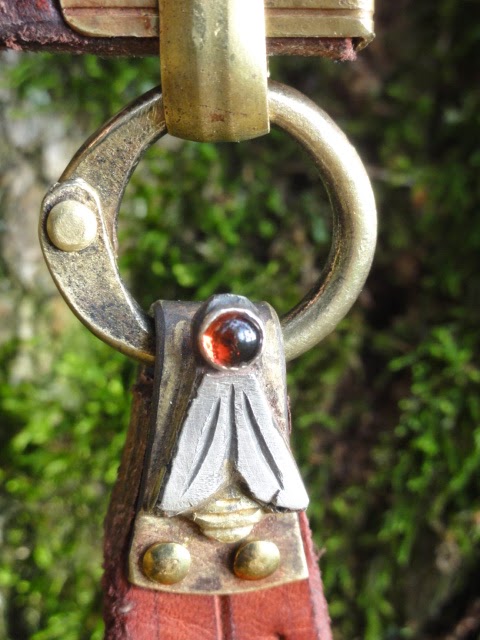Long time no post, but clumsy chisel work that ended up with injured finger got me thinking and slow down a bit. so here is the blog about my non historical work.
In my work that draws from my creativity and not from my knowledge of historical styles i tend to create visual language that represents the culture i am creating or illustrating. I think that ad-hoc item, created just from thin air seldom work well.
Most of my fantasy work draws its inspiration from Tolkiens Middle Earth, so i will ilustrate on that.
Here is some work i did from the culture around the town of Dale


the knife above is in Dalian style, its based on germanic animal style but apparently its obsessed with dragon. I did used germanic influence because Tolkien made Dale very Norse like. The idea is that its the EARLIER version of germanic styles so its very simple and has a very linear character


Another Dalian work, still in progress, this i imagine as later more joyful and colourful but still very coherrent
This is the first piece i made in the style and its not so developed in systematic way but you can already see some distinctive features - a bone inlay in wood, a linear depiction of dragon, engraved blade and sheet metal ferrules.
In the honour of Beorn
i had a hard time inventing how to portray Beorning culture, until i saw work of scottish painter Jon Hodgson. Some details on his work gave me an idea to use stylised animals and spirals as an ornamental element. Now i am pretty much at home around Carrock


here above is what i named knife of Beorn, not only because of the symbols, but also because it was challenge to make cool scabbard without leather as i wanted to commemorate Beorns peculiar eating habits

One piece antler belt buckle from this culture, the strap end will have a bee on it
and i will finish with a future project sketch. Beorning war knife.
To be continued with other cultures...










































.JPG)
.jpg)

.JPG)





